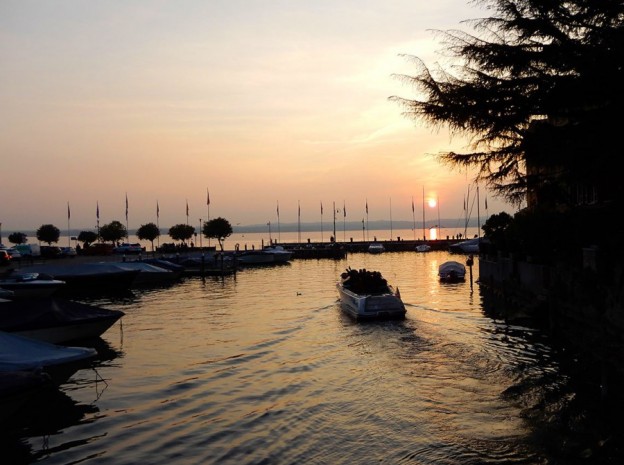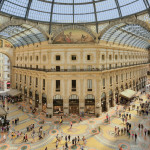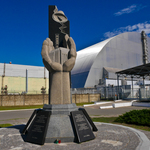Beverley Watts enjoys the beauty and the best of Lombardy in a long weekend break.
Lombardy is one of Italy’s largest regions and, nudging up to Switzerland, stretches from the Alps to the Po Valley. The vineyards of Franciacorta flourish south of Lake Iseo and the Po Valley lowlands are where the rice is grown for Milanese saffron risotto. Flying into Milan for a Thursday to Sunday break, we drove in a loop taking in Bergamo, Sirmione, Mantova and Cremona, avoiding the autostradas to appreciate the countryside. Lombardy’s northern position at the top of the boot means, of course, its weather isn’t as dry and mild as the toe and heel, but whatever the temperature, it’s glorious. Full disclosure: Italy seduced me long ago and is my favourite place in the world.
Milan
Even in the rain, Milan’s Cathedral in Piazza del Duomo is impressive. Started in 1386 and dedicated to the Nativity of Mary, it took six centuries to complete and is decorated with 3,400 statues, 135 gargoyles and 700 figures. The pink-hued marble was transported by canal from Lake Maggiore and it’s an intricate, incredibly detailed Gothic work of art.
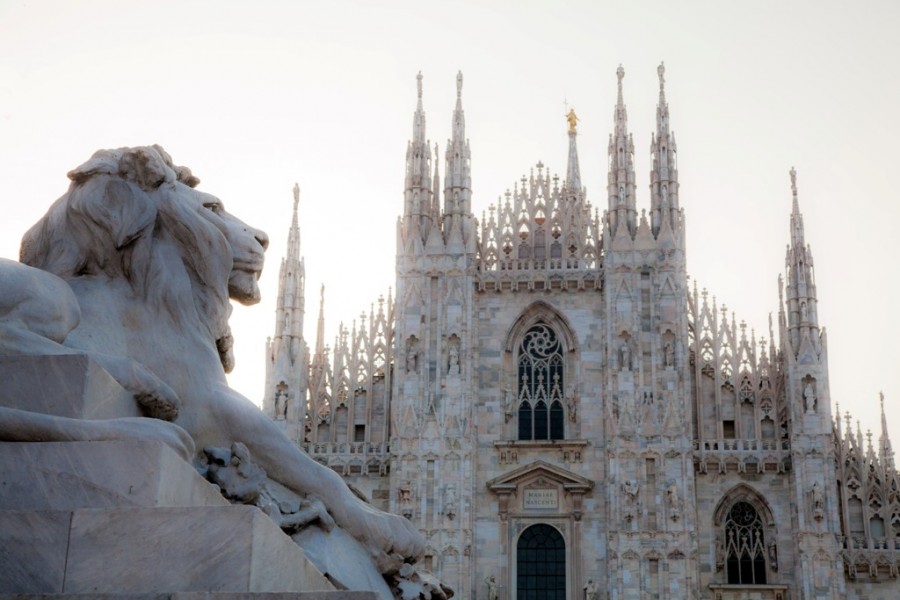
‘Commandingly beautiful, but grandly curious and superbly rich,’ decided Henry James, Charles Dickens loved its ‘majesty’ but Oscar Wilde believed the Duomo di Milano was ‘monstrous’. You have to see it to judge for yourself.
Close by stands the Galleria Vittorio Emanuele II, Italy’s oldest shopping mall. Erected in 1877 by Giuseppe Mengoni, it’s a soaring cruciform structure full of light with glass-vaulted arcades. An inspired design but unfortunate Mengoni plunged to his death from scaffolding.
Now there’s a tradition of warding off similar bad luck by spinning in reverse three times on the testicles of a mosaic bull on the floor. (Not so strange as Italian men have been touching their own crown jewels to ward off evil since the Middle Ages – maybe even Roman Times – though not necessarily while walking backwards.)
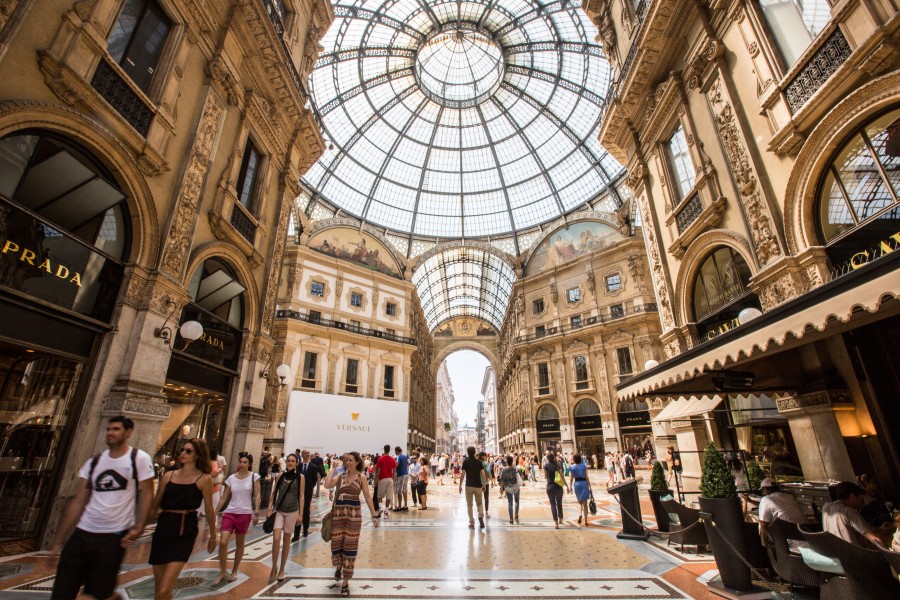
Every day giggling tourists gather to take turns to grind their heels on the prancing bovine. A McDonald’s once overlooked the busy spot dispensing beef burgers but since 2016, the retro-chic Pasticceria Marchesi has instead served pastries and caffè macchiato above a Prada store in this temple of luxury. Italian style has been restored.
Bergamo
Bergamo’s oldest quarter, the elevated Città Alta, is surrounded by huge defensive 16th-century Venetian walls, one of Lombardy’s many UNESCO World Heritage Sites. The Piazza Vecchia is the perfect medieval square with the Palazzo della Ragione, Torre Civica bell tower and the spurting sphinxes of the Contarini Fountain.
Bergamo Cathedral has a simple neo-classical exterior but the Santa Maria Maggiore Basilica is another remarkable Italian rose and cream confection, generously adorned inside and out. The people of Bergamo built the church to thank the Virgin Mary for protecting them from the 1100 plague and it’s a lavish offering with wooden marquetry, tapestries and stucco decoration.
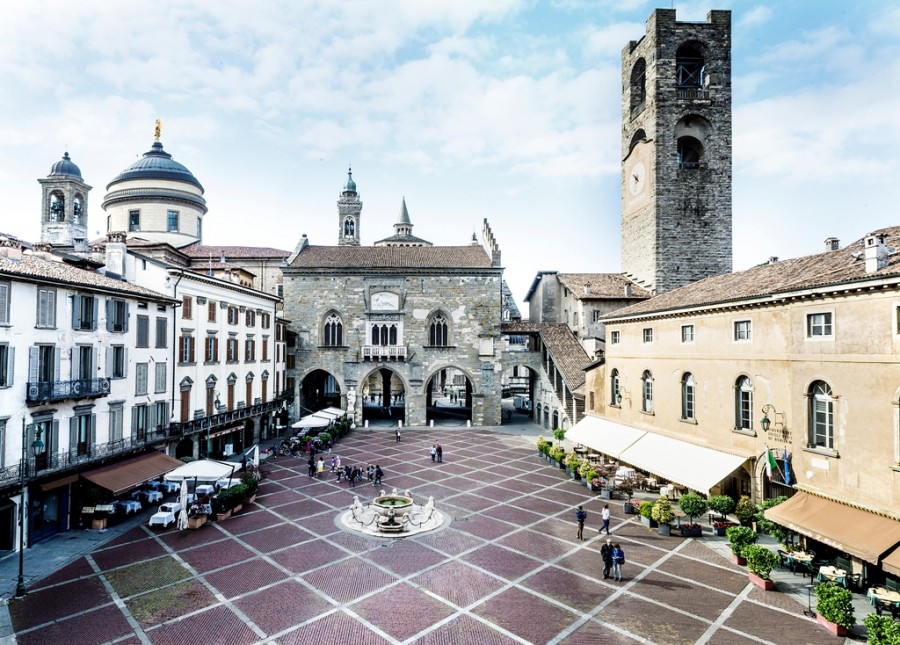
Right beside it, the Colleoni Chapel houses 15th-century mercenary Bartolomeo Colleoni’s tomb and his crest, displaying three shiny testes, is featured on the iron gates. And yes, you’re supposed to rub these for luck. Italians and the magic of ‘testicoli’ are inseparable. Whether wealthy Colleoni actually had an extra apricot is questionable as polyorchidism is extremely rare. It may just have been bravado.
For a brief break from culture, the patchwork of narrow streets surrounding Piazza Vecchia and Piazza del Duomo are perfect for a little shopping. The Caffè della Funicolare, originally a waiting room in the Città Alta funicular terminus which rises to the Upper Town, is now the California Bakery. (Not a US global franchise as I feared, the owners are Italian.)
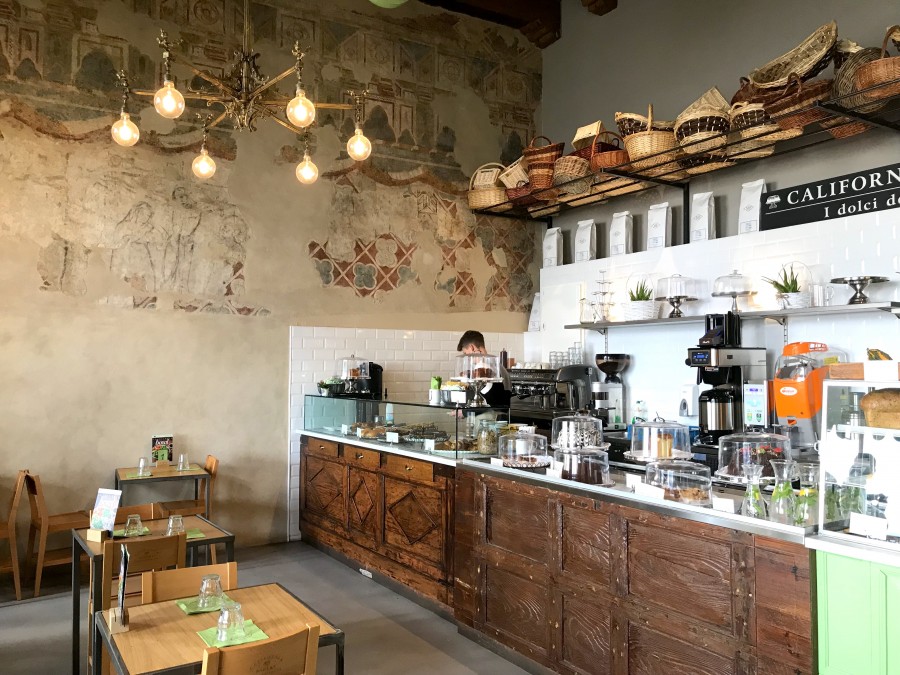
The premises have been carefully renovated, with 17 coats of paint removed from the windows. Most important of all, frescoes from the 1400s have been preserved and the view from the terrace across the Po plain is a peaceful panorama over terracotta roofs. For an even loftier lookout, go higher via the San Vigilio funicular to the ruins of San Vigilio Castle. This fortification is today ringed by a park and sits on a labyrinth of clandestine tunnels.
Sirmione
Sirmione, the ‘pearl of Lake Garda’, has been known for its thermal waters since the Roman Empire. The 13th century Scaligero Castle, topped with pretty swallowtail parapets, stands at the entrance of the town, encircled by water. One of the best-preserved castles in Italy, three turrets and a 47-metre high main tower create authentic fairy-tale charm.
In this romantic place, it’s easy to imagine Latin poet Catullus (born 84 BC) – who lived in Sirmione and wrote of love and desire – staring up at the stars ‘when night is still, gazing down on secret human desires’. A Roman villa on the tip of the peninsula of Sirmione is known as the Grotte di Catullo but the ruins are believed to be a little later than Catullus’s time.
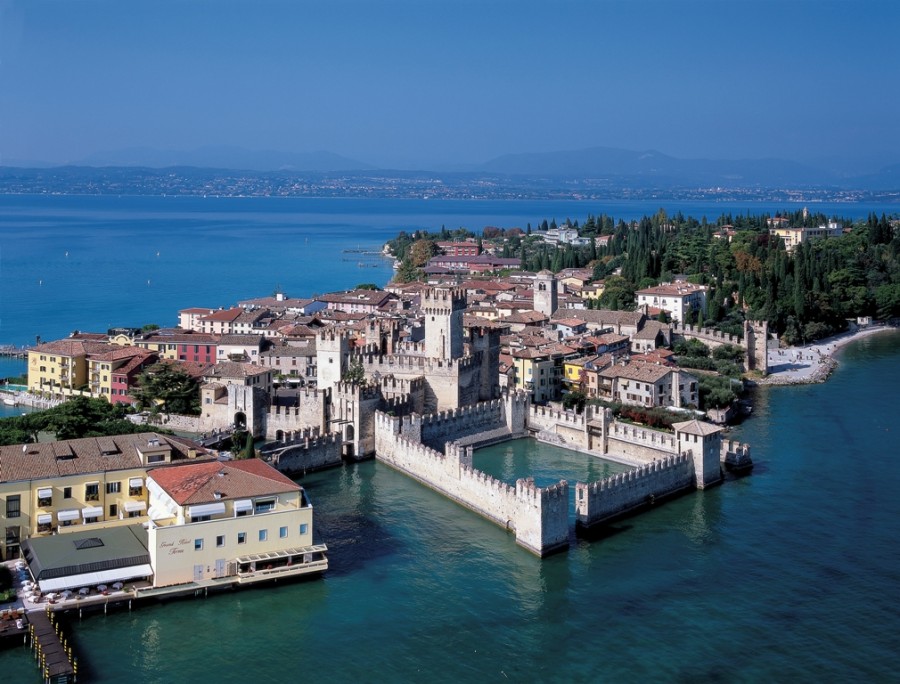
The hot mineral water spring emerges close to the settlement, travelling from Mount Balso and plunging 2,500 metres below sea level before bubbling up from the lake bed.
At Aquaria, the Thermal Spa of Terme Sirmione, there’s a choice of pools, hot tubs, saunas and sensory showers to experience the sulphurous water’s skin cleansing properties. The outdoor pool is the ideal place to watch the sunset, slowly poaching your body as the sky becomes streaked with blood orange.
Mantova
Protected by three 12th century artificial lakes, Mantova (or Mantua) is known as La Bella Addormentata, the Sleeping Beauty, because the city has changed so little since the Middle Ages. The unusual circular Rotonda di San Lorenzo church, constructed between 1040 and 1151, had been forgotten and covered by shops and houses until rediscovered during demolition work in 1907. The Rotonda stands on lower ground than the Palazzo della Ragione with its 1472 ornate Clock Tower showing both the lunar phases and the sun’s position in the zodiac signs.
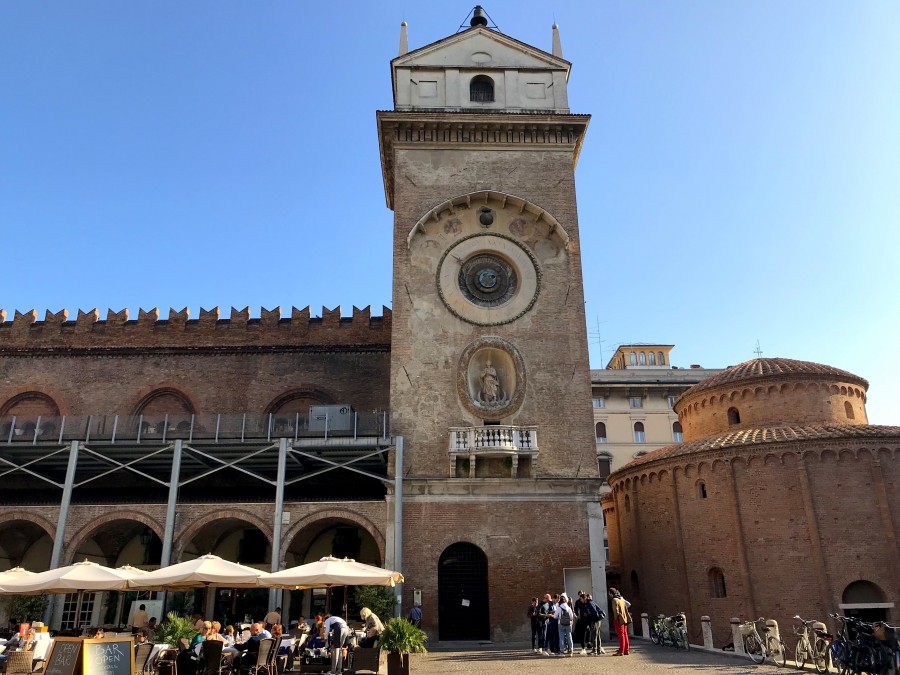
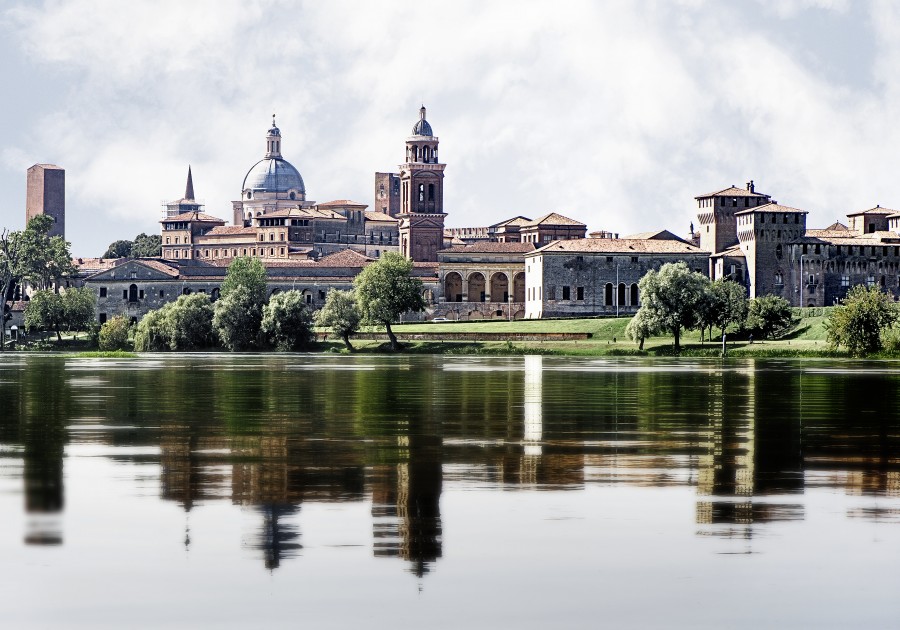
Take in the Cathedral of St Peter as you stroll around Piazza Sordello but don’t miss the exuberantly embellished Palazzo Te on the outskirts of Mantova. This late Renaissance pleasure palace was commissioned by Federico II Gonzaga in 1525 on the site of the family stables. A simple square house with a cloistered courtyard, the interior walls and ceilings are covered with frescoes of frolicking nymphs, gods, goddesses and giants in mythological settings.
Well-endowed men and curvaceous women abandon themselves in dense and colourful murals with a great deal of suggestive imagery. It is the most extraordinary place.
Cremona
In Cremona violins, violas, cellos and double-basses have been crafted since the 16th century. Each handmade instrument takes months to shape, shave, glue and varnish and in her workshop in Piazza della Pace, Katharina Abbühl demonstrates the traditional techniques, using a mix of maple and spruce.
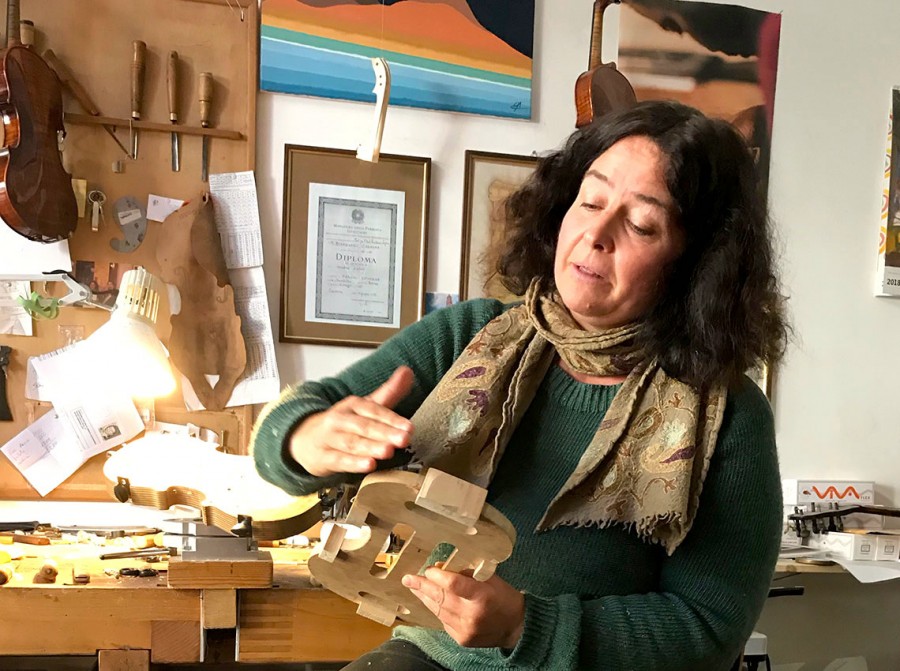
‘It’s an artistic work and the best wood is Italian spruce,’ Katharina explains. ‘The Val di Fiemme has a very specific climate and the wood has a particular smell and feel.’ Each of Katharina’s violins take 250 hours to fashion and the skill is to make the instrument light without losing strength.
In the Violin Museum, you can see the moulds and tools used by Antonio Stradivari and his family and view Stradivarius instruments worth many millions. To bring it all alive, special musical recitals take place in the Auditorium Giovanni Arvedi with musicians playing precious items from the museum’s collection.
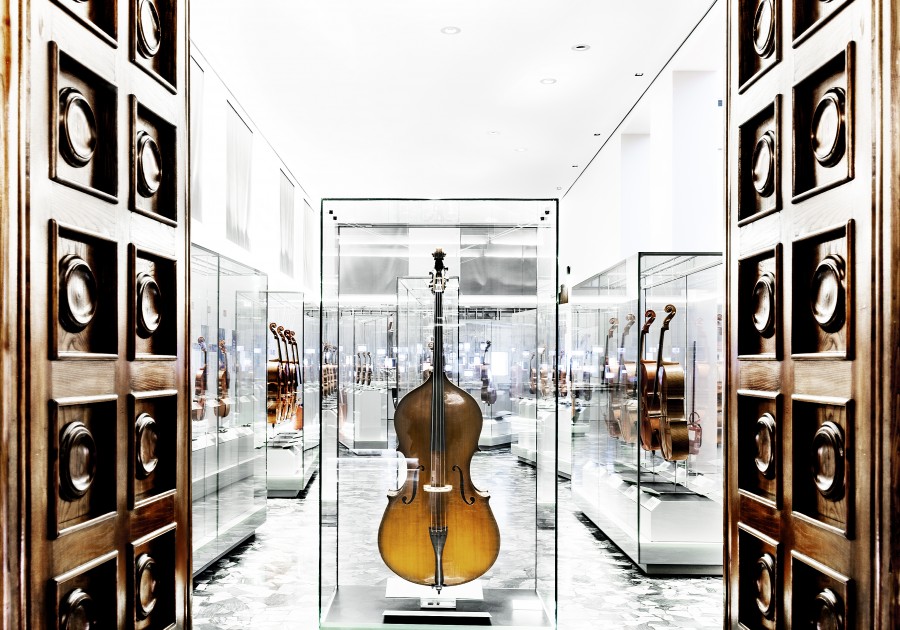
Piercing the sky is Torrazzo, the symbol of Cremona, the tallest medieval bell tower in Europe with 502 steps and its own astronomical clock. See it from a first-floor window in the Town Hall across the Piazza del Comune – it’s the ultimate, timeless ‘room with a view’.
Where to eat in Lombardy
If you adore a risotto, Lombardy’s your kind of place. The classic Risotto Milanese is made with Arborio short-grain rice and saffron stamens, with bone marrow also in the time-honoured recipe. It’s a lunch plate of yellow sunshine at Milan’s Terrazza Aperol, a restaurant with funky orange décor and a view of the Piazza del Duomo.
At Voce Aimo e Nadia in Milan, the risotto with cime di rapa (turnip tops) is a vibrant green. The bittersweet, peppery leaves are tasty and distinctive combined with the creamy rice in this new elegant venue, newly opened by Michelin star-winning chefs.
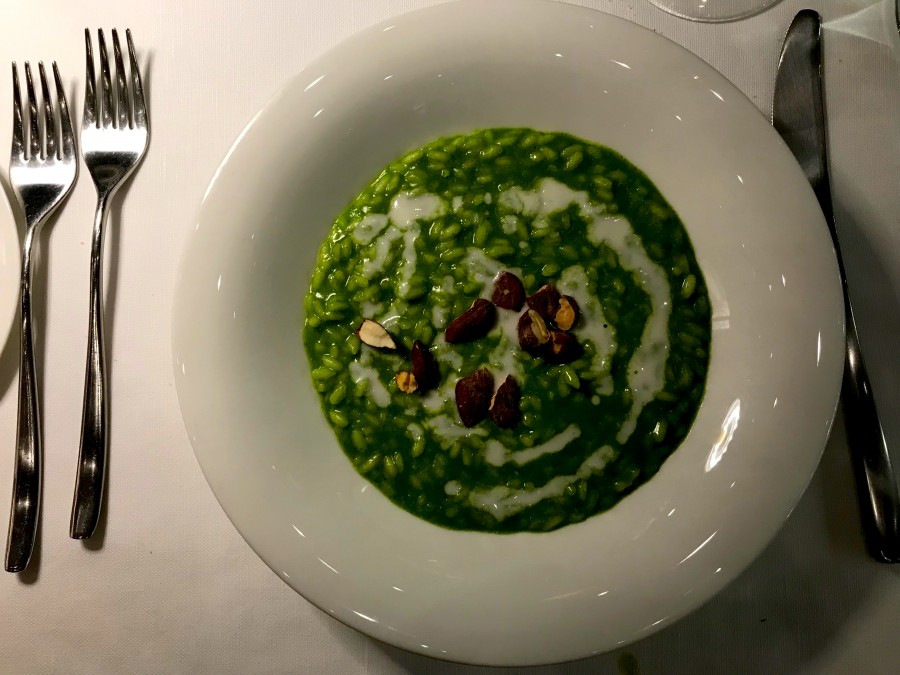
Try a pizza in Bergamo at Ristorante Il Sole, one of the oldest eateries, or select a rustic dish such as roast rabbit served with buckwheat polenta.
Maria Callas used to holiday in Sirmione and the Tavernetta Maria Callas celebrates the opera star. A courgette flower stuffed with cottage cheese and chives is a choice appetiser.
Make your own lunch in Mantova in a cooking class with Elisabetta Arcari at Peccati di Gola in Piazza Broletto. I learnt how to put together tortelli di zucca, (fresh pasta parcels filled with pumpkin) and devoured the lot.
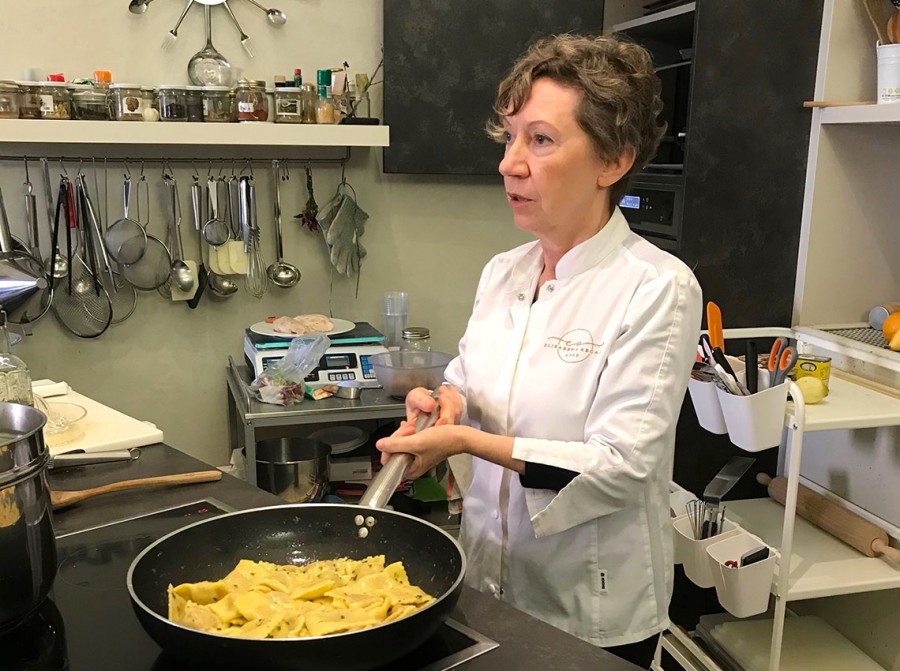
For wine connoisseurs, Mantova’s Enoteca Porto Catena pairs every dish with a different wine and specialises in shared platters of prosciutto, salami and cheese.
The elegant Hosteria 700 in Cremona is a hidden treasure with ‘historical ambience’. The octopus and potato warm salad with black olives and confit tomatoes is delicious.
Where to stay in Lombardy
In Milan, the chic 126-room Hotel The Square Milano Duomo occupies a 1940s property in a corner location, a short walk from the centre.
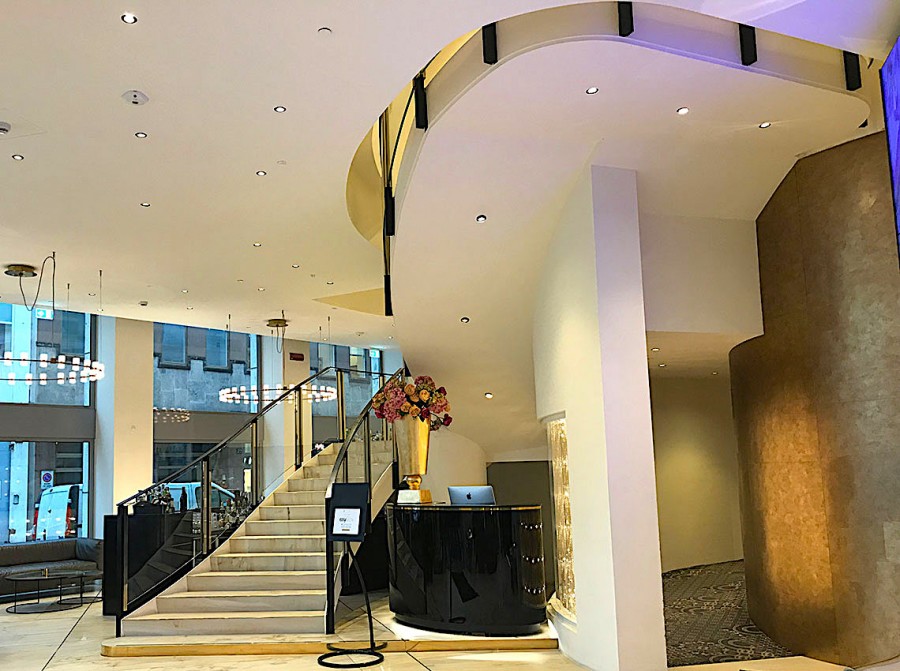
The Hotel Sirmione e Promessi Sposi, with two buildings overlooking the waters of Lake Garda in Sirmione, opened as a spa hotel in 1890.
Mantova’s Hotel Casa Poli has minimalist décor and a ‘love the planet’ ethos. Children are welcome and it’s perfectly situated.
Tell me more about The best of Lombardy in a long weekend
For more information about the best of Lombardy in a long weekend, visit inLOMBARDIA where there are details further details about accommodation, travel ideas, experiences and events.

